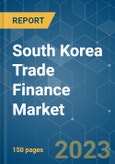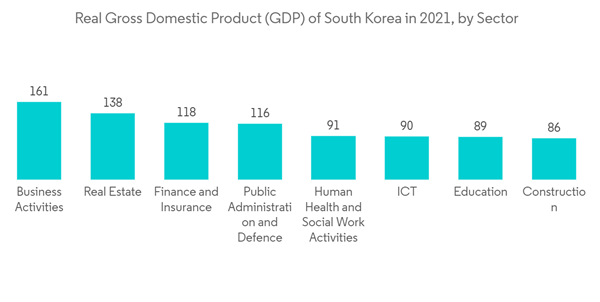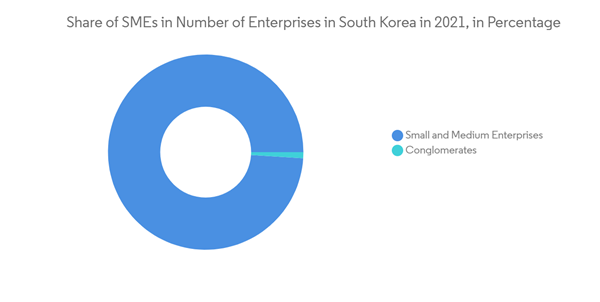Depending on the degree of confidence between counterparties and the amount of funding required from banks, trade finance can take many different forms. If the transaction only involves the importer and exporter, it can be completed on an open account basis or a cash-in-advance basis (money is received before items are dispatched). Banks nevertheless play a part. To reduce the risk of non-payment, banks provide products. The exporter asks the exporter's bank to produce documents and obtain money from the importer as part of the documented collection.
Early in 2022, the Omicron variant's popularity caused South Korea's COVID-19 numbers to skyrocket. Even with the COVID pandemic, Korean growth has been consistent. However, inflation has risen, primarily due to increasing prices for imported petroleum and industrial inputs.
Additionally, American businesses have been collaborating with Korean local businesses to increase market prospects in third-country markets including ASEAN, the Middle East, and other markets in the Indo-Pacific. With exports of goods and services accounting for 36% of GDP in 2020, Korea will continue to be one of the industrialised countries most dependent on exports. Korea serves as both a market destination for American goods and services and a hub for market development into other countries because to its strong maritime and air freight infrastructure.
South Korea Trade Finance Market Trends
Increase in Exports Activities Is Booming the Market
About half of South Korea's GDP comes from exports, and 25% of those exports go to China, which is its largest trading partner. The recurrent devaluations of China's currency have started to hurt South Korea, which has been battling with the rise of its currency, the won, versus the Japanese yen in important export markets. According to preliminary data, South Korean car shipments fell sharply by over a third in August. Smartphone exports increased, but rapidly developing Chinese handset manufacturers are now competing with South Korean company Samsung Electronics for market share worldwide.Chinese holiday shoppers are also being deterred by the weakening yuan, despite the nation's efforts to win them back following a Middle East Respiratory Syndrome.
Increase in SMEs is Driving the Market
The engagement of SMEs in imports and exports can serve as a proxy for the demand for trade finance products. Small and Medium-Sized Enterprises (SMEs) play a crucial role in South Korea's economy, which cannot be understated. The core of the Korean economy has always been comprised of SMEs. In Korea, SMEs account for 91% of businesses, 83% of all jobs, and 34% of exports. Considering the domestic presence of MNCs and other large companies, this is a sizable share. Support for this important area of the Korean economy has been continuous. The Ministry of SMEs and Startups was established in 2019, before COVID, to serve as a source of encouragement and support for all SMEs. The government believes that small businesses and start-ups are essential to addressing Korea's high young unemployment rate because they generate more than 80% of all jobs in the nation.Policies and programs that first served as pandemic reactions to short-term disruption are now anticipated to aid SMEs in adopting digital technology in the long run. In response to the COVID-19 problem, the Korean government moved swiftly, expanding existing programs and adopting several new measures to promote industry adoption of digital tools. The automation of administrative operations, assistance for firms to adopt remote working, and support for digital cross-border sales were among the major programs.
South Korea Trade Finance Market Competitor Analysis
With both domestic and foreign participants, the South Korean trade finance market is competitive. The market under study has the potential for expansion during the period, which is anticipated to increase market competitiveness. Companies such as Bank of America, Bank of New York, Citibank, Woori Bank, Nonghyup Bank, and others have a significant presence in the South Korean trade finance market.Additional Benefits:
- The market estimate (ME) sheet in Excel format
- 3 months of analyst support
Table of Contents
Companies Mentioned (Partial List)
A selection of companies mentioned in this report includes, but is not limited to:
- Bank of America
- Bank of New York Mellon
- Citibank
- HSBC
- Woori Bank
- Hana Bank
- Nonghyup Bank
- Shinhan Bank
- BNP Paribas
- KB Kookmin Bank
Methodology

LOADING...










